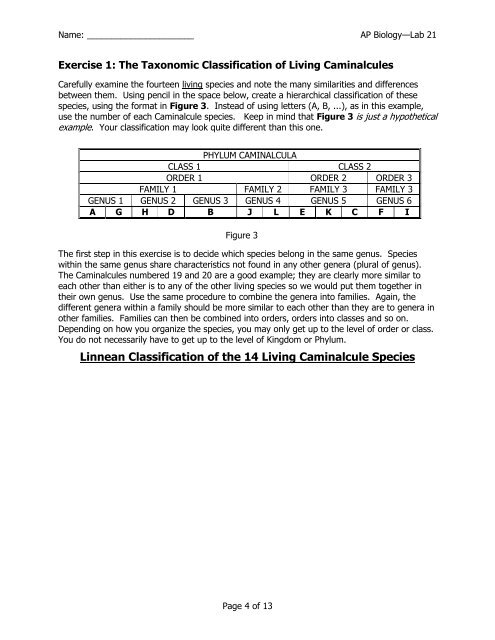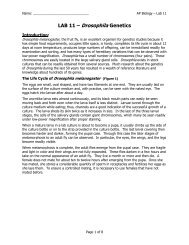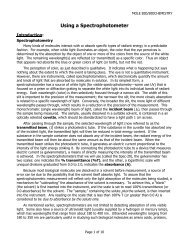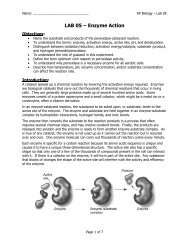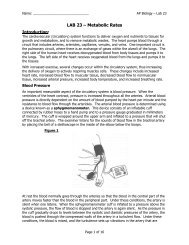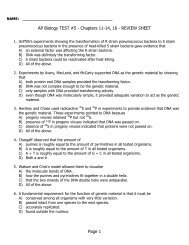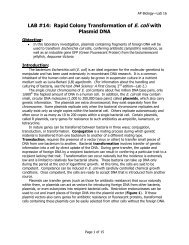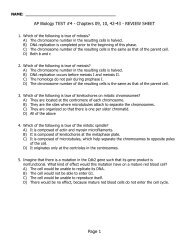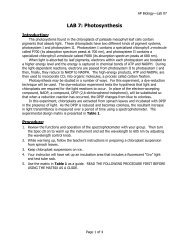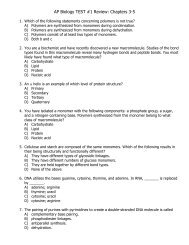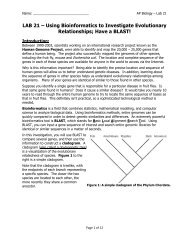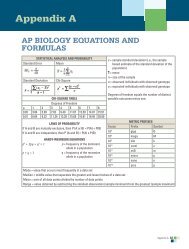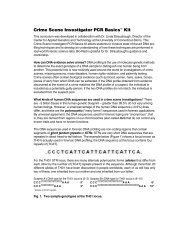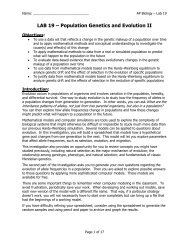LAB 21: Evolution and Classification
LAB 21: Evolution and Classification
LAB 21: Evolution and Classification
You also want an ePaper? Increase the reach of your titles
YUMPU automatically turns print PDFs into web optimized ePapers that Google loves.
Name: ______________________ AP Biology—Lab <strong>21</strong>Exercise 1: The Taxonomic <strong>Classification</strong> of Living CaminalculesCarefully examine the fourteen living species <strong>and</strong> note the many similarities <strong>and</strong> differencesbetween them. Using pencil in the space below, create a hierarchical classification of thesespecies, using the format in Figure 3. Instead of using letters (A, B, ...), as in this example,use the number of each Caminalcule species. Keep in mind that Figure 3 is just a hypotheticalexample. Your classification may look quite different than this one.PHYLUM CAMINALCULACLASS 1 CLASS 2ORDER 1 ORDER 2 ORDER 3FAMILY 1 FAMILY 2 FAMILY 3 FAMILY 3GENUS 1 GENUS 2 GENUS 3 GENUS 4 GENUS 5 GENUS 6A G H D B J L E K C F IFigure 3The first step in this exercise is to decide which species belong in the same genus. Specieswithin the same genus share characteristics not found in any other genera (plural of genus).The Caminalcules numbered 19 <strong>and</strong> 20 are a good example; they are clearly more similar toeach other than either is to any of the other living species so we would put them together intheir own genus. Use the same procedure to combine the genera into families. Again, thedifferent genera within a family should be more similar to each other than they are to genera inother families. Families can then be combined into orders, orders into classes <strong>and</strong> so on.Depending on how you organize the species, you may only get up to the level of order or class.You do not necessarily have to get up to the level of Kingdom or Phylum.Linnean <strong>Classification</strong> of the 14 Living Caminalcule SpeciesPage 4 of 13


